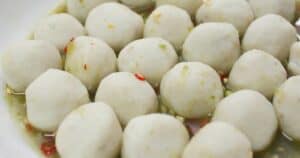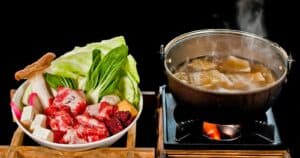Do you ever crave a dining experience that is interactive, flavorful, and deeply satisfying? If so, then hot pot is the meal for you! This popular Chinese cooking method involves simmering broths in a communal pot at the center of the table. Meat, vegetables, noodles, and dumplings are then placed into the bubbling liquid to quickly cook before your eyes. The ingredients absorb the savory broth’s delightful flavors as they become tender and delicious.
Hot pot allows you to create a customizable meal to suit your personal tastes. The broth can range from mild and comforting to fiery and spicy. Popular bases include tomato, mushroom, herbal, seafood, and authentic Sichuan mala. You also get to pick your own meats and veggies to add in. Go for thin slices of beef, lamb, chicken, shrimp or fish along with favorites like bok choy, Napa cabbage, shiitake mushrooms, tofu, and vermicelli noodles. The possibilities are practically endless!
The best part of hot pot is the engaging social experience it provides. As ingredients boil at the table, you can immerse yourself in lively conversation with dining companions. The meal becomes a mouthwatering adventure as you dip, swish, and sample all the items cooking before you. With hot pot, you can savor food and friendship at the same time!
A Brief History of Hot Pot
Hot pot has a long history in Chinese cuisine, dating back over 1,000 years. The earliest versions of this meal centered around hearty Mongolian stews cooked in metal cauldrons over open fires. The communal style of dining was essential for sharing warmth and cooking resources. Over time, the concept evolved into the hot pots we know today. Pots evolved into specialized simmering vessels with dividing strains. Broths grew more refined with diverse seasonings. And the variety of dipping ingredients expanded dramatically.
While origins are ancient, hot pot remains a beloved staple today. It continues traditions of togetherness and customization. Common hot pot broth bases range from comforting bone broths to spicy Sichuan mala. Modern venues allow diners to enjoy this interactive cooking experience in trendy restaurants or at home with electric pots. The beauty of hot pot is that while traditions continue, there’s always room for new trends and innovations.
Signature Broths: The Flavorful Foundation
The broth is the flavorful foundation of hot pot. Choose wisely to create an experience tailored to your tastes. Here are some top options:
Traditional Bone Broths
Simmered for hours and packed with collagen, bone broths make wonderfully mild yet nourishing hot pot bases. Beef and chicken are most common. Their mellow flavors complement any ingredients added. Ginger, scallions, garlic, and soy sauce often season basic broths. Enjoy them on their own or
Spicy Sichuan Mala
Mala hot pot broth combines the numbing essence of Sichuan peppercorns with the fiery kick of chili peppers. This creates an addicting oral sensation perfect for thrill-seeking diners. Common seasonings include star anise, cloves, chili flakes, and Sichuan pepper oil. The heat sensitizes your palate to savor more subtle flavors too. Beware though, mala broths can be tongue-numbingly intense!
Mushroom Vegetable
For plant-based diners, mushroom and mixed vegetable broths make flavorful, meat-free alternatives. Dried shiitakes, fresh button mushrooms, onions, carrots, and herbs like dill and parsley create sweet, earthy depth. Soy sauce, miso paste, mirin, and sesame oil help boost the savory umami taste. Mushroom broth hot pots make even tofu and veggies irresistible.
Seafood
Sheer heaven for pescatarians, seafood hot pot broth highlights the briny goodness of ocean flavors. A base of fish stock is studded with shrimp shells, scallops, kombu seaweed, and sometimes even whole crabs or crayfish simmering within. Scallions, ginger, garlic, lemongrass, and chili provide added dimension. For local flair, clams, lobster, salmon, or crab can star in regional seafood broths too.
Meat, Seafood & Veggies Galore: Hot Pot Ingredients
Beyond the broth, the ingredients you add in are equally important. Part of the fun is customizing your perfect hot pot meal. Here are top proteins, veggies, noodles and more to consider:
Thin Sliced Meats
Thin sliced meats cook quickly while absorbing maximal broth flavor. Popular picks include beef, lamb, pork, chicken, duck, shrimp, scallops, fish balls, and fish cakes. For ease, purchase pre-sliced meats and seafood at Asian grocers. Then dip them into the simmering pot for just 1-2 minutes until cooked through. For added flavor, marinate meats in soy sauce, sesame oil, garlic, and ginger beforehand.
Assorted Vegetables
Since vegetables cook rapidly, they’re perfect for hot pots. Leafy greens, mushrooms, sprouts, carrots, broccoli, cabbages, and squash are all fair game. For variety, offer an assortment of colors and textures. Slice veggies thinly so they absorb broth as they soften. Heartier choices like sweet potatoes may need more time to become fork tender.
Vermicelli Noodles & Dumplings
For hearty carbohydrates, an array of noodles and dumplings make savory hot pot additions. Vermicelli noodles made from mung beans or rice cook quickly while adding bulk and texture. Dumplings like shui mai and beef gyoza can be boiled right in the broth to infuse even more flavor. Their pillowy dough soaks up delicious liquid as they cook.
Dipping Sauces & Condiments
Don’t forget dipping accoutrements like traditional sauces, chili oils, and herbs. Essential condiments include soy sauce, sesame sauce, ponzu, and chili garlic paste. Vinegars, hot sauces like sriracha, and flavorful oils for drizzling all enhance the experience. Chopped scallions, cilantro, basil, mint, and lime wedges offer fresh finishing touches.
Tips for Hot Pot Success
Hot pot dining may seem intimidating for first timers. But a little preparation goes a long way! Here are tips and tricks to ensure hot pot success:
Use a Divided Pot
Invest in a pot with a divider or central strainer to keep broths separate. This allows you to enjoy multiple flavors like spicy mala on one side and soothing mushroom on the other. Dividers also help control cooking times so ingredients don’t overcook.
Ready Ingredients Beforehand
To make service smooth, prep all ingredients and arrange them attractively on platters before cooking. Slice meats uniformly and thin. Cut veggies bite-size. Make several small batches of items that cook quickly like dumplings. This way you can add more ingredients as the pot simmers without interruption.
Watch Cooking Times
Pay attention to cooking times so ingredients don’t end up mushy. Leafy greens, thin fish, and enoki mushrooms may only need 30 seconds in the broth. Meats take 1-2 minutes, denser veggies need 2-3 minutes. Remove ingredients promptly with strainers or slotted spoons once cooked.
Let The Broth Shine
Resist overloading the pot with ingredients. Crowding creates uneven cooking. Let the broth’s flavor shine through by simply simmering a few items at a time. You can always add more later after removing cooked foods. Clean broth also reduces risks of spreading germs between diners.
Consider Entertainment
Encourage lively conversation but have other entertainment options too. The communal experience of hot pot is half the fun! But during cooking lulls, a blender to whip up drinks, music playlist, or games like Jenga keep the energy lively.
Where to Enjoy Hot Pot
While home electric pots provide hot pot convenience, restaurants provide the full immersive experience. Here are some of the top spots to savor hot pot:
Hai Di Lao – Major Cities Nationwide
Famous for their signature Sichuan mala broth, tableside noodle dances, and excellent service, Hai Di Lao offers hot pot theatricality. Reservations recommended.
Little Sheep Mongolian Hot Pot – LA, New York, Texas, Minnesota
This popular chain is known for its vast broth and dipping sauce bar. Choose your favorites from an endless array to perfectly customize each bite. Open late night.
Shabuya – San Francisco, California
Elegant and modern hot pot eatery with A5 wagyu beef options. Outdoor heated dining available. Creative sake cocktails too.
Beijing Noodle No. 9 – New York City, New York
Trendy two-story restaurant with hip decor. Known for traditional Beijing-style broths. Handmade noodles and dumplings are house specialties.
Zen Hot Pot – Las Vegas, Nevada
Over-the-top ambiance with hot pots encrusted in Swarovski crystals. All-you-can-eat packages available.
Bring the Hot Pot Adventure Home
Don’t limit your hot pot enjoyment to restaurants alone. Electric tabletop pots now allow you to DIY this experience at home. Here’s how to recreate the magic:
Gear Up
An electric divided pot like the Zojirushi Gourmet d’Expert or Zelite Infinity Smart Pot simplifies home hot pot. Also helpful: ladles, strainers, individual broth bowls, chopsticks, and saucing dishes.
Pick Broths
Look for concentrated bases you just boil with water like Mishima Tsuyu seafood dashi or Omson Mushroom Broth. You can also make your own signature broths.
Prep Ingredients
Thinly slice an array of meats, seafood, veggies, noodles, and dumplings. Arrange ingredients attractively on platters for easy cooking access.
Sauces & Seasonings
Line up standard sauces like chili garlic paste, ponzu, and sesame. Provide extras like chili crisps, scallions, lime wedges, cilantro, etc. for personalization.
Safety First
Use cooking chopsticks to handle food and separate eating utensils. Keep pot handles facing inward. Clean thoroughly between uses.
Entertain
Encourage conversation but also have music, drinks, or activities flowing to keep the fun going.
Wrap Up
At the end, drizzle remaining broth over cooked rice noodles for a flavorful fried noodle finale.
With the right gear, food, and mindset, it’s easy to recreate hot pot magic at home. Gather friends and get dipping! Just be warned: hot pot can be habit-forming. But that’s not necessarily a bad thing when it comes to this delicious and communal dining experience.
FAQs
What’s the difference between hot pot and shabu shabu?
Hot pot and shabu shabu are very similar. Both involve dipping raw ingredients like meats, seafood, and vegetables into simmering broths. However, shabu shabu broth is typically lighter than hot pot. It is based on dashi, kombu seaweed, and sake rather than the richer bone broths of hot pot. Shabu shabu also emphasizes very thin slices for swishing briefly in the broth until just cooked.
What ingredients can you use in hot pot?
Almost anything goes! Thin sliced beef, pork, lamb, chicken, seafood, tofu, mushrooms, leafy greens, vermicelli noodles, wontons, and dumplings are all fair game. The key is to slice ingredients thinly so they cook quickly. Also provide a variety of textures and flavors.
How do you prevent hot pot broth from becoming overly fatty?
Limit how much oil you add to the broth. Go easy on fatty meats. Remove any residue between batches. Use a ladle to skim off excess fat pooling on top. Divide pots can also help isolate fatty ingredients on one side only.
Is it safe for vegetarians to share hot pot with meat eaters?
Yes, with some precautions. Use divided pots to keep ingredients separate. Designate specific broth bowls and utensils for vegetarians only. Cook and remove vegetarian items first. Avoid cross-contamination when adding seasonings. Maintain constant boiling temperatures.
Can you reuse hot pot broth?
It’s not recommended. The broth loses flavor and can spoil or become unsafe over time. For later use, broth can be frozen for a few months. But for food safety, it’s best to make fresh batches each time you plan to use hot pot.





